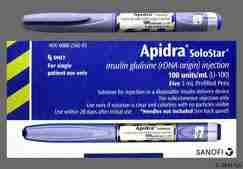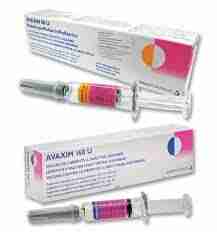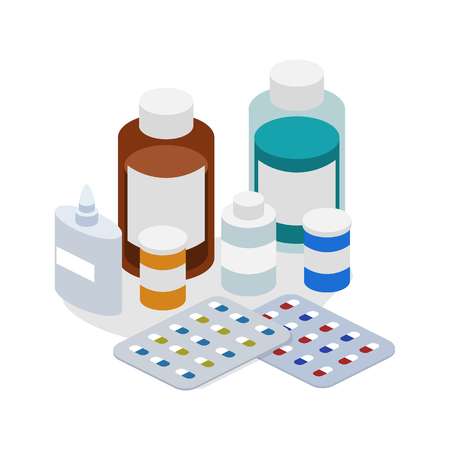Human Albumin 20% Behring is a solution for infusion containing 200 g/L of total protein of which at least 96% is human albumin.
Each 100 mL contain at least human albumin 19.2 g.
Each 50 mL contain at least human albumin 9.6 g.
The solution is hyperoncotic.
Other ingredients include: Sodium ions 125 mmol/L, caprylate 16 mmol/L, N-acetyl-D,L-tryptophan 16 mmol/L, chloride ions max 100 mmol/L, HCl or NaOH (in small amounts for pH adjustment), water for injections.
.jpg)

.jpg)

Human Albumin 20% Behring 50ml ( Human Albumin )
Generic Name : Human Albumin
Brand Name : Human Albumin 20% Behring 50ml ( Human Albumin )
Strength : 100%
Price: 3435 TK
Stock: YES
User for : Human
Note : If medicine quantity 1 = 1 Strip ( plz see the description)
Share in Social Media
Product Details
Action
Pharmacotherapeutic Group: Plasma substitutes and plasma protein fractions, albumin. ATC Code: B05A A01.
Indications/Uses
Increase in oncotic pressure in case of oncotic deficiency.
Diluted as a 4-5% solution for iso-oncotic volume replacement with long term effect.
Therapy for albumin deficiency.
Diluted as a 4-5% solution for iso-oncotic volume replacement with long term effect.
Therapy for albumin deficiency.
Dosage/Direction for Use
The concentration of the albumin preparation, dosage and the infusion rate should be adjusted to the patient's individual requirements.
The dose required depends on the size of the patient, the severity of trauma or illness and on continuing fluid and protein losses. Measures of adequacy of circulating volume and not plasma albumin levels should be used to determine the dose required.
If human albumin is to be administered, haemodynamic performance should be monitored regularly; this may include: Arterial blood pressure and pulse rate, central venous pressure, pulmonary artery wedge pressure, urine output, electrolyte and haematocrit/haemoglobin.
Administration: Human albumin can be administered by the IV route, either undiluted or after dilution in an isotonic solution (eg, 5% glucose or 0.9% sodium chloride).
Albumin solutions must not be diluted with water for injections as this may cause haemolysis in recipients.
The infusion rate should be adjusted according to the individual circumstances and the indication.
In plasma exchange the infusion rate should be adjusted to rate of removal.
If large volumes are administered, Human Albumin 20% Behring should be warmed to room or body temperature before use.
Do not use solutions which are cloudy or contain residues (deposits/particles). This may indicate that the protein is unstable or that the solution has become contaminated.
The dose required depends on the size of the patient, the severity of trauma or illness and on continuing fluid and protein losses. Measures of adequacy of circulating volume and not plasma albumin levels should be used to determine the dose required.
If human albumin is to be administered, haemodynamic performance should be monitored regularly; this may include: Arterial blood pressure and pulse rate, central venous pressure, pulmonary artery wedge pressure, urine output, electrolyte and haematocrit/haemoglobin.
Administration: Human albumin can be administered by the IV route, either undiluted or after dilution in an isotonic solution (eg, 5% glucose or 0.9% sodium chloride).
Albumin solutions must not be diluted with water for injections as this may cause haemolysis in recipients.
The infusion rate should be adjusted according to the individual circumstances and the indication.
In plasma exchange the infusion rate should be adjusted to rate of removal.
If large volumes are administered, Human Albumin 20% Behring should be warmed to room or body temperature before use.
Do not use solutions which are cloudy or contain residues (deposits/particles). This may indicate that the protein is unstable or that the solution has become contaminated.
Overdosage
Hypervolaemia may occur if the dosage and rate of infusion are too high. At the 1st clinical signs of cardiovascular overload (headache, difficulty in breathing, jugular vein congestion), or increased blood pressure, raised central venous pressure or pulmonary oedema, the infusion should be stopped immediately and the patient's haemodynamic parameters carefully monitored.
Contraindications
Hypersensitivity to albumin preparations or to any of the excipients of Human Albumin 20% Behring.
Special Precautions
Suspicion of allergic or anaphylactic type reactions (reaction eg, an allergic shock) requires immediate discontinuation of the injection. In case of shock, standard medical treatment for shock should be implemented.
Albumin should be used with caution in conditions where hypervolaemia (oversized blood volume) and its consequences or haemodilution (dilution of the blood) could represent a special risk for the patient. Examples of such conditions are: Decompensated heart insufficiency (severe heart muscle deficiency), hypertension (increased blood pressure), oesophageal varices (disease of the gullet vessels), pulmonary oedema, haemorrhagic diathesis (increased tendency to bleeding), severe anaemia (severe red blood cell deficiency), renal and postrenal anuria (kidney failure).
The colloid-osmotic effect of human albumin 200 or 250 g/L is approximately 4 times that of blood plasma. Therefore, when highly concentrated albumin is administered, care must be taken to assure adequate hydration (fluid supply) of the patient. Patients should be monitored carefully to guard against circulatory overload or hyperhydration (increased volume of total body water).
200-250 g/L human albumin solutions are relatively low in electrolytes compared to the 40-50 g/L human albumin solutions. When albumin is given, the electrolyte status of the patient should be monitored (see Dosage & Administration) and appropriate steps taken to restore or maintain the electrolyte balance.
Albumin solutions must not be diluted with water for injections as this may cause haemolysis (destruction of red cells) in recipients.
If comparatively large volumes are to be replaced, controls of coagulation and haematocrit are necessary. Care must be taken to ensure adequate substitution of other blood constituents (coagulation factors, electrolytes, platelets and erythrocytes).
Hypervolaemia may occur if the dosage and rate of infusion are not adjusted to the patient's circulatory situation. At the 1st clinical signs of cardiovascular overload [headache, dyspnoea (difficulty in breathing), jugular vein congestion], or increased blood pressure, raised venous pressure or pulmonary oedema, the infusion is to be stopped immediately.
Human Albumin 20 % Behring, low salt contains 125 mmol Na/L. To be taken into consideration by patients on a controlled sodium diet.
Virus Safety: When medicines are made from human blood or plasma, certain measures are put in place to prevent infections being passed on to patients. These include careful selection of blood and plasma donors to make sure those at risk of carrying infections are excluded, and the testing of each donation and pools of plasma for signs of virus/infections.
Manufacturers of these products also include steps in the processing of the blood or plasma that can inactivate or remove viruses. Despite these measures, when medicines prepared from human blood or plasma are administered, the possibility of passing on infection cannot be totally excluded. This also applies to any unknown or emerging viruses or other types of infections.
There are no reports of virus infections with albumin manufactured to European Pharmacopoeia specifications by established processes.
It is strongly recommended that every time a dose of Human Albumin 20% Behring, low salt, is received, the name and batch number of the product are recorded in order to maintain a record of the batches used.
Use in pregnancy & lactation: The safety of Human Albumin 20% Behring for use in human pregnancy has not been established in controlled clinical trials. However, clinical experience with albumin suggests that no harmful effects on the course of pregnancy, or on the fetus and the neonate are to be expected, particularly since human albumin is a normal constituent of human blood. No animal reproduction studies have been conducted with Human Albumin Behring. Experimental animal studies are insufficient to assess the safety with respect to reproduction, development of the embryo or fetus, the course of gestation and peri- and postnatal development.
Albumin should be used with caution in conditions where hypervolaemia (oversized blood volume) and its consequences or haemodilution (dilution of the blood) could represent a special risk for the patient. Examples of such conditions are: Decompensated heart insufficiency (severe heart muscle deficiency), hypertension (increased blood pressure), oesophageal varices (disease of the gullet vessels), pulmonary oedema, haemorrhagic diathesis (increased tendency to bleeding), severe anaemia (severe red blood cell deficiency), renal and postrenal anuria (kidney failure).
The colloid-osmotic effect of human albumin 200 or 250 g/L is approximately 4 times that of blood plasma. Therefore, when highly concentrated albumin is administered, care must be taken to assure adequate hydration (fluid supply) of the patient. Patients should be monitored carefully to guard against circulatory overload or hyperhydration (increased volume of total body water).
200-250 g/L human albumin solutions are relatively low in electrolytes compared to the 40-50 g/L human albumin solutions. When albumin is given, the electrolyte status of the patient should be monitored (see Dosage & Administration) and appropriate steps taken to restore or maintain the electrolyte balance.
Albumin solutions must not be diluted with water for injections as this may cause haemolysis (destruction of red cells) in recipients.
If comparatively large volumes are to be replaced, controls of coagulation and haematocrit are necessary. Care must be taken to ensure adequate substitution of other blood constituents (coagulation factors, electrolytes, platelets and erythrocytes).
Hypervolaemia may occur if the dosage and rate of infusion are not adjusted to the patient's circulatory situation. At the 1st clinical signs of cardiovascular overload [headache, dyspnoea (difficulty in breathing), jugular vein congestion], or increased blood pressure, raised venous pressure or pulmonary oedema, the infusion is to be stopped immediately.
Human Albumin 20 % Behring, low salt contains 125 mmol Na/L. To be taken into consideration by patients on a controlled sodium diet.
Virus Safety: When medicines are made from human blood or plasma, certain measures are put in place to prevent infections being passed on to patients. These include careful selection of blood and plasma donors to make sure those at risk of carrying infections are excluded, and the testing of each donation and pools of plasma for signs of virus/infections.
Manufacturers of these products also include steps in the processing of the blood or plasma that can inactivate or remove viruses. Despite these measures, when medicines prepared from human blood or plasma are administered, the possibility of passing on infection cannot be totally excluded. This also applies to any unknown or emerging viruses or other types of infections.
There are no reports of virus infections with albumin manufactured to European Pharmacopoeia specifications by established processes.
It is strongly recommended that every time a dose of Human Albumin 20% Behring, low salt, is received, the name and batch number of the product are recorded in order to maintain a record of the batches used.
Use in pregnancy & lactation: The safety of Human Albumin 20% Behring for use in human pregnancy has not been established in controlled clinical trials. However, clinical experience with albumin suggests that no harmful effects on the course of pregnancy, or on the fetus and the neonate are to be expected, particularly since human albumin is a normal constituent of human blood. No animal reproduction studies have been conducted with Human Albumin Behring. Experimental animal studies are insufficient to assess the safety with respect to reproduction, development of the embryo or fetus, the course of gestation and peri- and postnatal development.
Use In Pregnancy & Lactation
The safety of Human Albumin 20% Behring for use in human pregnancy has not been established in controlled clinical trials. However, clinical experience with albumin suggests that no harmful effects on the course of pregnancy, or on the fetus and the neonate are to be expected, particularly since human albumin is a normal constituent of human blood. No animal reproduction studies have been conducted with Human Albumin Behring. Experimental animal studies are insufficient to assess the safety with respect to reproduction, development of the embryo or fetus, the course of gestation and peri- and postnatal development.
Adverse Reactions
If the patient experience reactions, especially those which are not mentioned, the doctor or pharmacist must be informed.
The following adverse reactions are based on post-marketing experience and were observed very rarely (<1/10,000 including reported single cases): General Disorders and Administration Site Conditions: Chills, fever, nausea, vomiting, headache, malaise and flush.
Immune System Disorders: Hypersensitivity reactions or allergic-anaphylactic reactions eg, rash, itching, urticaria, dyspnoea, tachycardia, bradycardia, hypotension. These reactions might in single cases be reaching as far as life-threatening shock.
Mild reactions normally disappear rapidly after the infusion rate has been slowed down or the infusion stopped. In case of severe reactions (eg, anaphylactic shock), the infusion has to be stopped immediately and appropriate treatment instituted.
For safety with respect to transmissible agents, see Precautions.
The following adverse reactions are based on post-marketing experience and were observed very rarely (<1/10,000 including reported single cases): General Disorders and Administration Site Conditions: Chills, fever, nausea, vomiting, headache, malaise and flush.
Immune System Disorders: Hypersensitivity reactions or allergic-anaphylactic reactions eg, rash, itching, urticaria, dyspnoea, tachycardia, bradycardia, hypotension. These reactions might in single cases be reaching as far as life-threatening shock.
Mild reactions normally disappear rapidly after the infusion rate has been slowed down or the infusion stopped. In case of severe reactions (eg, anaphylactic shock), the infusion has to be stopped immediately and appropriate treatment instituted.
For safety with respect to transmissible agents, see Precautions.
View ADR Monitoring Form
Drug Interactions
No specific interactions of human albumin with other medicinal products are known.
Incompatibilities: Human Albumin 20% Behring must not be mixed with other medicinal products (except the recommended diluents), whole blood and packed red cells.
Incompatibilities: Human Albumin 20% Behring must not be mixed with other medicinal products (except the recommended diluents), whole blood and packed red cells.
Caution For Usage
Once the container has been opened, the contents have to be used immediately.
Any unused product or waste material should be disposed of in accordance with local requirements.
Any unused product or waste material should be disposed of in accordance with local requirements.
Storage
Do not store above +25°C. Do not freeze. Protect from light.
MIMS Class
ATC Classification
B05AA01 - albumin ; Belongs to the class of blood substitutes and plasma protein fractions. Used as blood substitutes.
P1S1S3
Presentation/Packing
Soln for infusion (clear, slightly viscous liquid, almost colourless, yellow, amber or green) 20% x 50 mL
RELATED PRODUCTS








